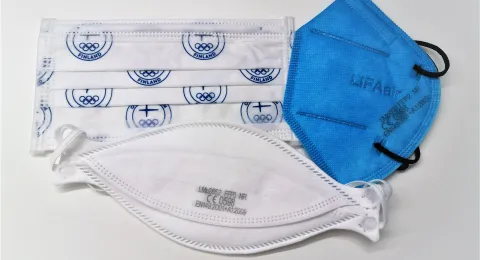Different facemasks
Healthcare professionals wear countless respirators, surgical masks and gowns daily. This group of personal protective equipment (PPE) is typically used only once and most often made from fossil-based plastics, such as polypropylene, polyethylene and polyethylene terephthalate.
Different types and qualities of facemasks can be roughly divided into surgical masks (Type I, II, IIR) and respirators/filtering face pieces (FFP1, FFP2, FFP3), containing usually three to five different nonwoven layers.
In healthcare, surgical masks of Type II and IIR have been used to protect patients and workers from respiratory droplets and splashes (IIR), whereas FFP2 and FFP3 protects also from fine airborne aerosols.
Usually in industry, reusable half masks with disposable particulate filters have been used (P2, P3)
Facemasks meet different quality requirements
Surgical, respirators and reusable mask materials fullfil different requirements defined by different standards to meet the quality criteria. In Europe, standards for surgical, respirators and reusable half mask materials are EN 14683 (surgical masks), EN 149:2001 and A1:2009 (FFPs) and EN140/EN1827+ EN143 (reusable halfmasks).
Masks should filter enough aerosol particles, be breathable and fit tightly to the user’s face
Most important properties of the facemasks are filtration efficiency, easy breathability and capability to fit tightly to the user’s face.
Mask material should filter enough bacteria-containing aerosol particles passing through. This bacterial filtration efficiency (BFE) is the fractional reduction in the number of colony-forming unists (CFUs). For Type II, CFU reduction should be at least 98%.

